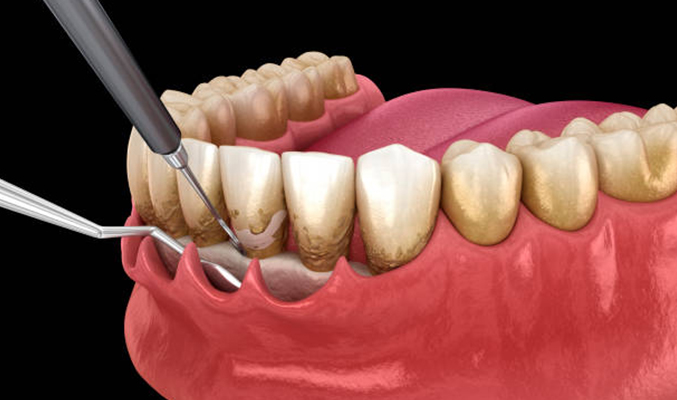Strength training is an essential part of any fitness routine, and for women, building a strong back and toned biceps can enhance overall upper body strength and aesthetics. Whether you’re aiming to improve your posture, prevent injury, or simply achieve a more defined look, incorporating a women’s back and bicep workout into your exercise routine can offer significant benefits. This article will guide you through everything you need to know about back and bicep workouts for women, including exercises, routines, tips for progression, and how to stay motivated.
Introduction to Women’s Back and Bicep Workout
In today’s fitness culture, strength training is no longer reserved for men or professional athletes. Women are increasingly recognizing the value of building muscle, not only for the aesthetic benefits but also for overall health and functionality. A well-rounded fitness routine should include exercises targeting all major muscle groups, and a women’s back and bicep workout is essential for developing a strong, balanced upper body.
This article will dive into the specifics of back and bicep training, offering detailed exercises, routines, and tips that cater to women of all fitness levels. By the end of this guide, you’ll be equipped with the knowledge and motivation to incorporate these powerful workouts into your regular fitness routine.
The Importance of Strengthening the Back and Biceps
Posture and Back Health
One of the primary benefits of a strong back is improved posture. Many people, especially those who work in sedentary jobs, suffer from poor posture, leading to back pain and discomfort. Strengthening the muscles of the upper and lower back helps to correct this by providing the support needed to maintain proper alignment of the spine. This not only reduces the risk of injury but also enhances your overall appearance by promoting a more upright, confident posture.
Functional Strength
The back and biceps are involved in many of the movements we perform daily, from lifting groceries to pulling open doors. Strengthening these muscles can improve your ability to perform these tasks with ease, reducing the likelihood of strain or injury. Additionally, a strong back is crucial for other exercises in your fitness routine, such as squats and deadlifts, as it provides stability and support.
Aesthetic Benefits
Many women are motivated by the desire to achieve a toned, defined look in their upper body. A well-developed back and biceps can contribute to a more balanced and proportionate physique. The “V” shape created by a strong back can also give the illusion of a smaller waist, enhancing your overall body shape.
Anatomy of the Back and Biceps
Understanding the Muscles of the Back
To effectively train the back, it’s important to understand the different muscles involved. The back is composed of several key muscle groups, including:
- Latissimus Dorsi (Lats): These are the large muscles on either side of your back that help create the “V” shape. They are involved in pulling motions, such as pull-ups and rows.
- Trapezius (Traps): Located across the upper back and shoulders, the traps are responsible for moving the shoulder blades and supporting the neck.
- Rhomboids: These muscles are situated between the shoulder blades and help with retracting the shoulders and maintaining good posture.
- Erector Spinae: Running along the spine, the erector spinae muscles help to extend and stabilize the back.
Key Bicep Muscles
The biceps are a smaller muscle group located on the front of the upper arm. They are primarily responsible for flexing the elbow and are involved in many pulling movements. The biceps consist of two main muscles:
- Biceps Brachii: This muscle has two heads (long and short) and is the most prominent when flexing the arm.
- Brachialis: Located underneath the biceps brachii, this muscle contributes to the thickness of the upper arm and plays a significant role in elbow flexion.
Warm-Up: Preparing for a Women’s Back and Bicep Workout
Dynamic Stretches
Before diving into your back and bicep workout, it’s crucial to properly warm up the muscles to prevent injury and improve performance. Dynamic stretching involves moving parts of your body through a full range of motion, increasing blood flow and flexibility. Some effective dynamic stretches for the back and biceps include:
- Arm Circles: Stand with your arms extended out to the sides and make small circles, gradually increasing the size. This helps to warm up the shoulders and upper back.
- Torso Twists: Stand with your feet shoulder-width apart and rotate your torso from side to side, keeping your hips stationary. This stretches the muscles of the lower back and core.
Light Cardio
Incorporating 5-10 minutes of light cardio, such as jogging or using a stationary bike, can help elevate your heart rate and prepare your entire body for the workout ahead.
Mobility Exercises
To further prepare your muscles and joints, include mobility exercises like cat-cow stretches (for the spine) and wrist rotations (for the biceps and forearms). These exercises will ensure your joints are ready for the load they’ll be handling during your workout.
Top Exercises for Women’s Back Workouts
Deadlifts
Target Muscles: Erector spinae, glutes, hamstrings, traps
Deadlifts are one of the most effective exercises for building overall strength, especially in the back. They engage multiple muscle groups, making them a compound movement that can help you develop a strong, stable back.
- How to Perform: Stand with your feet hip-width apart, with a barbell on the floor in front of you. Bend at the hips and knees to grasp the barbell with an overhand grip. Keeping your back straight and core engaged, lift the barbell by extending your hips and knees. Stand up tall, then lower the bar back to the ground with control.
- Tips: Keep the bar close to your body throughout the lift, and avoid rounding your back to prevent injury.
Pull-Ups and Assisted Pull-Ups
Target Muscles: Lats, biceps, traps, rhomboids
Pull-ups are a challenging yet highly effective exercise for targeting the lats and biceps. If you’re not yet able to perform a full pull-up, assisted variations using a resistance band or machine can help you build the necessary strength.
- How to Perform: Hang from a pull-up bar with your palms facing away from you (overhand grip) and your hands shoulder-width apart. Engage your core and pull your body up until your chin clears the bar. Lower yourself back down with control.
- Tips: Focus on pulling with your back muscles rather than relying solely on your arms. Keep your movements slow and controlled for maximum muscle engagement.
Bent-Over Rows
Target Muscles: Lats, rhomboids, traps, biceps
Bent-over rows are a versatile exercise that can be performed with a barbell, dumbbells, or a resistance band. They target multiple muscles in the back, making them a staple in any back workout routine.
- How to Perform: Stand with your feet shoulder-width apart, holding a barbell or dumbbells in front of you. Bend at the hips and knees, keeping your back flat and your torso at a 45-degree angle to the floor. Pull the weight towards your torso, squeezing your shoulder blades together at the top. Lower the weight back down with control.
- Tips: Avoid rounding your back and keep your core engaged throughout the movement to protect your spine.
Lat Pulldowns
Target Muscles: Lats, biceps, traps
Lat pulldowns are an excellent exercise for those who are not yet able to perform pull-ups. They effectively target the lats and can be easily adjusted in weight to match
your strength level.
- How to Perform: Sit at a lat pulldown machine with your feet flat on the floor. Grasp the bar with an overhand grip, hands wider than shoulder-width apart. Pull the bar down towards your chest, keeping your back straight and elbows pointed down. Slowly return the bar to the starting position.
- Tips: Focus on squeezing your shoulder blades together as you pull the bar down, and avoid using momentum to lift the weight.
Face Pulls
Target Muscles: Rear delts, traps, rhomboids
Face pulls are a great exercise for targeting the upper back, particularly the rear delts and traps. They help improve posture and balance out the muscles in the shoulder girdle.
- How to Perform: Attach a rope handle to a high pulley on a cable machine. Stand facing the machine and grasp the ends of the rope with both hands. Step back so there is tension in the cable, and pull the rope towards your face, keeping your elbows high. Squeeze your shoulder blades together at the top of the movement, then return to the starting position.
- Tips: Keep your movements slow and controlled, and focus on using your upper back muscles to pull the rope.
T-Bar Rows
Target Muscles: Lats, rhomboids, traps, biceps
T-bar rows are a variation of the traditional bent-over row, offering a different angle of resistance that can help target the muscles of the mid-back more effectively.
- How to Perform: Position yourself on a T-bar row machine, with your feet securely placed on the platform. Lean forward and grasp the handles, keeping your back flat. Pull the handles towards your chest, squeezing your shoulder blades together at the top. Lower the weight back down with control.
- Tips: Focus on maintaining a neutral spine and engaging your core throughout the movement.
Superman Exercise
Target Muscles: Erector spinae, glutes, traps
The Superman exercise is a bodyweight movement that targets the lower back and helps improve overall back stability and strength.
- How to Perform: Lie face down on a mat with your arms extended in front of you and your legs straight. Simultaneously lift your arms, chest, and legs off the ground, holding the position for a few seconds. Lower back down with control.
- Tips: Focus on squeezing your lower back and glutes to lift your limbs, and avoid arching your neck.
Best Bicep Exercises for Women
Dumbbell Curls
Target Muscles: Biceps brachii, brachialis
Dumbbell curls are a classic bicep exercise that can be performed in a variety of ways to target different parts of the biceps.
- How to Perform: Stand with your feet shoulder-width apart, holding a dumbbell in each hand with your palms facing forward. Keeping your elbows close to your body, curl the dumbbells up towards your shoulders. Lower the weights back down with control.
- Tips: Avoid swinging the weights or using momentum; focus on isolating the biceps by keeping your upper arms stationary.
Hammer Curls
Target Muscles: Biceps brachii, brachialis, brachioradialis
Hammer curls are similar to traditional curls but involve a neutral grip (palms facing each other), which targets the brachialis and brachioradialis muscles more effectively.
- How to Perform: Stand with your feet shoulder-width apart, holding a dumbbell in each hand with your palms facing each other. Keeping your elbows close to your body, curl the dumbbells up towards your shoulders. Lower the weights back down with control.
- Tips: Keep your movements slow and controlled, and focus on squeezing the biceps at the top of the movement.
Concentration Curls
Target Muscles: Biceps brachii
Concentration curls are an isolation exercise that targets the biceps, allowing for maximum muscle contraction and development.
- How to Perform: Sit on a bench with your legs spread, holding a dumbbell in one hand. Rest your elbow on the inside of your thigh, with your arm fully extended. Curl the dumbbell up towards your shoulder, squeezing the biceps at the top. Lower the weight back down with control.
- Tips: Focus on isolating the biceps by keeping the rest of your body still and avoiding the use of momentum.
Barbell Curls
Target Muscles: Biceps brachii, brachialis
Barbell curls are a compound movement that targets the entire bicep muscle, allowing you to lift heavier weights compared to dumbbell curls.
- How to Perform: Stand with your feet shoulder-width apart, holding a barbell with an underhand grip (palms facing up). Keeping your elbows close to your body, curl the barbell up towards your shoulders. Lower the weight back down with control.
- Tips: Avoid swinging the barbell or using your lower back to lift the weight; focus on using your biceps to perform the movement.
Cable Curls
Target Muscles: Biceps brachii, brachialis
Cable curls offer constant tension throughout the entire range of motion, making them an effective exercise for targeting the biceps.
- How to Perform: Stand facing a cable machine with the pulley set to the lowest position. Attach a straight bar to the cable and grasp it with an underhand grip. Keeping your elbows close to your body, curl the bar up towards your shoulders. Lower the weight back down with control.
- Tips: Keep your movements slow and controlled, and focus on squeezing the biceps at the top of the movement.
Preacher Curls
Target Muscles: Biceps brachii
Preacher curls are an isolation exercise that targets the lower part of the biceps, helping to create a more defined peak.
- How to Perform: Sit at a preacher curl bench with your arms resting on the padded surface. Grasp a barbell or dumbbells with an underhand grip and curl the weight up towards your shoulders. Lower the weight back down with control.
- Tips: Focus on keeping your upper arms stationary and avoid letting your elbows flare out to the sides.
Combining Back and Bicep Exercises into a Workout Routine
Sample Workout Plans for Beginners
If you’re new to strength training, it’s important to start with a routine that allows you to build strength and confidence without overwhelming your body. Here’s a sample beginner’s women’s back and bicep workout:
- Warm-Up: 5-10 minutes of light cardio, followed by dynamic stretches
- Workout:
- Lat Pulldowns: 3 sets of 12 reps
- Bent-Over Rows: 3 sets of 10 reps
- Dumbbell Curls: 3 sets of 12 reps
- Hammer Curls: 3 sets of 12 reps
- Face Pulls: 3 sets of 15 reps
- Superman Exercise: 3 sets of 15 reps
- Cool-Down: 5-10 minutes of light cardio and static stretching
Intermediate and Advanced Routines
As you progress, you can increase the intensity and complexity of your workouts by adding more challenging exercises and increasing the weight and volume. Here’s an example of an intermediate/advanced routine:
- Warm-Up: 5-10 minutes of light cardio, followed by dynamic stretches
- Workout:
- Deadlifts: 4 sets of 8 reps
- Pull-Ups or Assisted Pull-Ups: 4 sets of 8-10 reps
- T-Bar Rows: 4 sets of 10 reps
- Barbell Curls: 4 sets of 10 reps
- Concentration Curls: 4 sets of 12 reps
- Lat Pulldowns: 4 sets of 12 reps
- Face Pulls: 4 sets of 15 reps
- Cool-Down: 5-10 minutes of light cardio and static stretching
Supersets for Efficiency and Burn
Supersets involve performing two exercises back-to-back with little to no rest in between. This can help you save time and increase the intensity of your workout. Here’s an example of a back and bicep superset routine:
- Warm-Up: 5-10 minutes of light cardio, followed by dynamic stretches
- Workout:
- Superset 1: Deadlifts + Dumbbell Curls (4 sets of 8-10 reps each)
- Superset 2: Pull-Ups + Hammer Curls (4 sets of 8-10 reps each)
- Superset 3: Bent-Over Rows + Concentration Curls (4 sets of 10 reps each)
- Superset 4: Lat Pulldowns + Barbell Curls (4 sets of 12 reps each)
- Cool-Down: 5-10 minutes of light cardio and static stretching
Tips for Progression and Avoiding Plateaus
Increasing Weight and Intensity
To continue making progress in your back and bicep workouts, it’s important to gradually increase the weight you’re lifting and the intensity of your workouts. This can be done by adding more sets and reps, increasing the weight, or incorporating more challenging exercises. Aim to increase the weight you’re lifting by 5-10% every few weeks.
Importance of Rest and Recovery
Rest and recovery are just as important as the workout itself. Your muscles need time to repair and grow after being stressed during exercise. Make sure to get plenty of sleep, stay hydrated, and give your muscles at least 48 hours of rest before targeting the same muscle group again.
Tracking Your Progress
Keep a workout journal to track your exercises, sets, reps, and weights. This will help you monitor your progress over time and ensure you’re consistently challenging
yourself.
Common Mistakes to Avoid
Poor Form and Technique
One of the most common mistakes in strength training is using poor form. This can lead to injury and prevent you from getting the most out of your workout. Focus on performing each exercise with correct form, even if that means lifting lighter weights.
Overtraining
While it’s important to challenge yourself, overtraining can lead to burnout and injury. Listen to your body and make sure to include rest days in your routine.
Neglecting Other Muscle Groups
While it’s great to focus on your back and biceps, don’t neglect the other muscle groups in your body. Make sure to incorporate exercises for your legs, chest, shoulders, and core to create a balanced workout routine.
Conclusion
Incorporating a women’s back and bicep workout into your fitness routine can lead to significant improvements in strength, muscle tone, and overall fitness. By focusing on exercises that target these muscle groups, and progressively increasing the intensity of your workouts, you can achieve the strong, defined back and arms you’ve always wanted.













